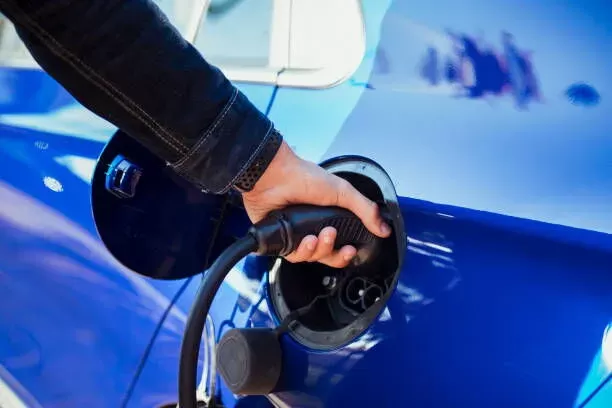Notifications

9 minutes, 52 seconds
-42 Views 0 Comments 0 Likes 0 Reviews

Why EV Charging Speed Matters: A Guide to Faster Charging
As a trusted EV charger manufacturer in China, Topper Company provides dependable electric vehicle charging station equipment and comprehensive solutions.
Electric vehicles (EVs) are quickly becoming a popular choice for drivers, thanks to their environmental benefits, lower operating costs, and variety of models. However, one of the most common questions new and potential EV owners ask is: How long does it take to charge an EV?
The answer depends on various factors. Although all EVs may seem to charge the same way, charging times can range from under 30 minutes to over 12 hours. These differences are influenced by factors like battery size, the car's onboard charging capacity, the charger’s power level, battery temperature, and even the time of day you plug in.
Here’s a quick breakdown of typical charging times:
Level 1 (120V AC): 20–40 hours for a full charge
Level 2 (240V AC): 4–10 hours
DC Fast Charging: 20–60 minutes to reach 80% capacity
To minimize the time your EV spends plugged in and get back on the road faster, here are several strategies to help speed up your charging process.
One of the most impactful steps to improving your charging time is upgrading from a Level 1 charger to a Level 2 charger. Level 1 chargers typically use a standard household outlet, providing only 3 to 5 miles of range per hour. This pace is slow, especially if you have a long commute.
Why switch to Level 2?
Level 2 chargers use a 240V outlet and can provide 12 to 60 miles of range per hour, depending on your car’s model and charger specifications. Installing a Level 2 charger requires professional installation, but many utilities and governments offer incentives or rebates to offset costs.
Battery performance and charging speed are highly sensitive to temperature. Extreme cold or heat can slow down charging efficiency.
Tips for managing battery temperature:
In hot weather: Park in shaded areas or garages to avoid overheating the battery.
In cold weather: Precondition the battery or use a thermal management system (if available) to warm up the battery before fast charging.
Many EVs, such as Teslas and Hyundais, have active thermal management systems to keep the battery at an optimal temperature for faster charging.
Routine maintenance of your charging equipment and habits can impact charging speed.
Best practices:
Clean the charging port regularly to avoid dust or debris disrupting the connection.
Avoid unplugging and reconnecting frequently during a charge session, especially with DC fast charging.
Regularly check cables for wear and tear to ensure efficient energy transfer.
Good charging hygiene ensures that both your vehicle and charger remain in top condition, which can contribute to faster and more reliable charging over time.
Electric grids are under the most strain during peak hours, typically in the late afternoon and early evening. Charging during these times can reduce charging speed and increase electricity costs.
Benefits of off-peak charging:
Faster charging speeds: Less strain on the grid often means more stable power and possibly higher amperage.
Lower electricity rates: Many utility companies offer time-of-use pricing, making off-peak charging more affordable.
A cleaner grid: Off-peak hours often coincide with the use of cleaner energy sources like wind and solar.
Use your EV's built-in timer or a smart charger app to schedule charging during off-peak hours.
Cold batteries charge poorly, particularly with DC fast chargers. To speed up charging, it’s best to warm the battery before using high-powered charging.
How to warm up your battery:
Preconditioning: Enable your car’s battery preconditioning feature through its app or dashboard.
Charge with a Level 1 or 2 charger briefly before switching to a DC fast charger to gently warm up the battery.
For EVs without advanced thermal management, this simple step can reduce fast-charging times significantly.
The state of charge (SoC) refers to how full your battery is, and it plays a crucial role in charging speed.
How SoC affects charging:
Low SoC (0–60%): Charging happens the fastest when the battery is closer to empty.
High SoC (80–100%): Charging slows down significantly as the battery nears full capacity to prevent overheating and overcharging.
Many DC fast chargers reduce charging speed past 80%, so it’s often recommended to charge only up to 80% for daily driving. This helps preserve battery health and reduces overall charging time.
If your EV has an integrated navigation system, it may automatically precondition the battery when it detects that you’re approaching a DC fast charger.
What does this do?
Preconditioning adjusts the battery’s temperature while you’re driving, ensuring that it’s at the optimal temperature when you arrive at the charging station. This feature is available in many newer EVs, such as those from Tesla, Rivian, and Hyundai.
Not all public chargers are the same. Some stations deliver more power, have better uptime, and offer real-time updates on availability.
Optimizing your charging experience:
Use apps like PlugShare, ChargePoint, or Electrify America to find high-power chargers (e.g., 150kW or 350kW) that support ultra-fast charging.
Check reviews and station data to avoid chargers with poor performance.
Choosing the right charger can significantly improve how quickly you can get back on the road.
Automakers often release software updates that improve charging efficiency, including better battery management and faster charging capabilities.
How updates help:
Increase charging speeds.
Improve the battery’s charging curve (how fast it accepts power).
Enhance thermal management to reduce charging time.
Ensure your EV is running the latest software, whether through over-the-air updates or a dealer visit.
Plan your charging to maximize efficiency. It’s often better to top up your battery regularly rather than waiting until it’s nearly empty.
Tips for efficient charging:
For daily commuting: Charge to 80% and top off during times of low usage.
For road trips: Use high-powered DC chargers to charge between 10% and 80% to minimize time spent charging.
For battery health: Avoid charging to 100% unless necessary.
Strategic charging habits not only save time but also extend the life of your battery.
Improving your EV charging speed isn’t just about using a more powerful charger—it’s about understanding how your EV works, how charging works, and how certain habits and conditions can make the process more efficient. By upgrading equipment, managing battery temperature, choosing the right charging times, and using smart tools, you can reduce your charging time and enhance your EV ownership experience.
As EV technology continues to evolve, future models will likely offer even faster and more efficient charging. In the meantime, these tips will help you optimize your current charging setup, whether you’re at home, on the road, or on a long-distance trip.Know more about Google SEO Directory

